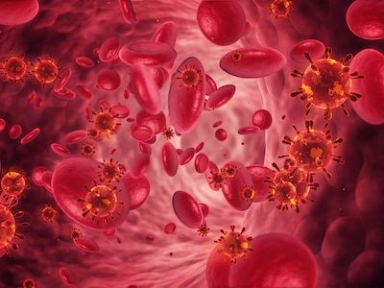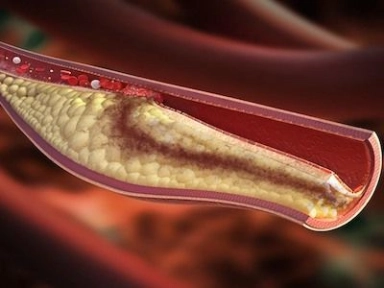{
event: "article_read",
name: `Enoxaparin monotherapy vs UFH monotherapy among inpatients with NSTEMI`,
author: ``,
tags: `Thrombosis`,
publication_date: ``,
interaction_type: "content"
}
Enoxaparin monotherapy vs UFH monotherapy among inpatients with NSTEMI
Enoxaparin monotherapy more effective and economical than unfractionated heparin monotherapy among inpatients with NSTEMI
Findings from analysis of real-world data from more than 1 million patients from 859 US hospitals.
Main Takeaway
- Enoxaparin was associated with a significantly lower risk for ischaemic complications and death than unfractionated heparin (UFH) among inpatients with myocardial infarction (MI) with no ST-segment elevation (NSTEMI) but not in patients with unstable angina (UA) and STEMI.
- Enoxaparin vs UFH was associated with significantly lower odds of major bleeding and costs among all 3 acute coronary syndrome (ACS) cohorts.
Why This Matters
- Despite proven effectiveness, enoxaparin monotherapy is much less used than UFH monotherapy across all spectrums of ACS.
- Additional research is needed to better understand the methods for improving the upstream selection of anticoagulants to optimise clinical outcomes.
Study Design
- Study evaluated 1,048,053 patients (age, ≥18 years) with an inpatient admission for initial episode of ACS between 2010 and 2016 across 859 US hospitals.
- Outcomes evaluated: all-cause in-hospital mortality, non-fatal MI, recurrent angina and composite ischaemic complications during any hospital visit within 30 days post-index discharge.
- Secondary outcomes: prevalence of anticoagulant use, enoxaparinand UFH-related treatment costs, total length of stay and risk for 30-day readmission.
- Funding: Sanofi Inc.
Key Results
- Overall, 20.9%, 55.6% and 23.5% patients were diagnosed with UA, NSTEMI and STEMI, respectively.
- Among the overall population, 11.4% and 47.4% received enoxaparin and UFH monotherapy, respectively.
- Among patients with NSTEMI, enoxaparin vs UFH was associated with lower odds of:
- MI: adjusted OR (aOR), 0.95 (95% CI, 0.92-0.99);
- recurrent angina: aOR, 0.88 (95% CI, 0.78-0.98);
- in-hospital mortality: aOR, 0.88 (95% CI, 0.81-0.95); and
- composite ischaemic complications: aOR, 0.95 (95% CI, 0.92-0.98)
- Among patients with UA, odds of having composite ischaemic complications (aOR, 1.09; 95% CI, 1.00-1.19) and recurrent angina (aOR, 1.15; 95% CI, 1.03-1.28) were slightly higher in enoxaparin vs UFH group, whereas MI and all-cause in-hospital mortality were comparable.
- Among patients with STEMI, odds of all mentioned outcomes were lower in enoxaparin group; however, results were not statistically significant.
- Enoxaparin was associated with lower odds of major bleeding in all 3 cohorts:
- UA: aOR, 0.77 (95% CI, 0.66-0.91);
- NSTEMI: aOR, 0.68 (95% CI, 0.64-0.72); and
- STEMI: aOR, 0.72 (95% CI, 0.63-0.83)
- The estimated overall cost savings during index admission until 30 days post-index discharge for enoxaparin over UFH cohort were $2972/patient, $2475/patient and $3050/patient for UA, NSTEMI and STEMI cohorts, respectively.
- 30-day all-cause readmission was lower in enoxaparin vs UFH group for NSTEMI (adjusted mean [aM], 0.95; 95% CI, 0.92-0.98) and STEMI cohorts (aM, 0.92; 95% CI, 0.86-0.98) but higher for UA cohort (aM, 1.12; 95% CI, 1.03-1.22).
- The total length of hospital stay during the 30-day follow-up was not statistically different in any of the 3 cohorts.
Limitations
- Limitations of typical retrospective analysis using a hospital administrative database should be considered.
- Key outcome variables might have been underestimated.
- Factors that could influence anticoagulant selection were not captured.
- Rosenthal N, Xiao Z, Kartashov A, Levorsen A, Shah BR. Comparative Effectiveness and Costs of Enoxaparin Monotherapy Versus Unfractionated Heparin Monotherapy in Treating Acute Coronary Syndrome. Am J Cardiovasc Drugs. 2020 Jun 23 [Epub ahead of print]. doi: 10.1007/s40256-020-00419-9. PMID: 32578166.
Related articles
MAT-BH-2100638/v2/Jun 2023




